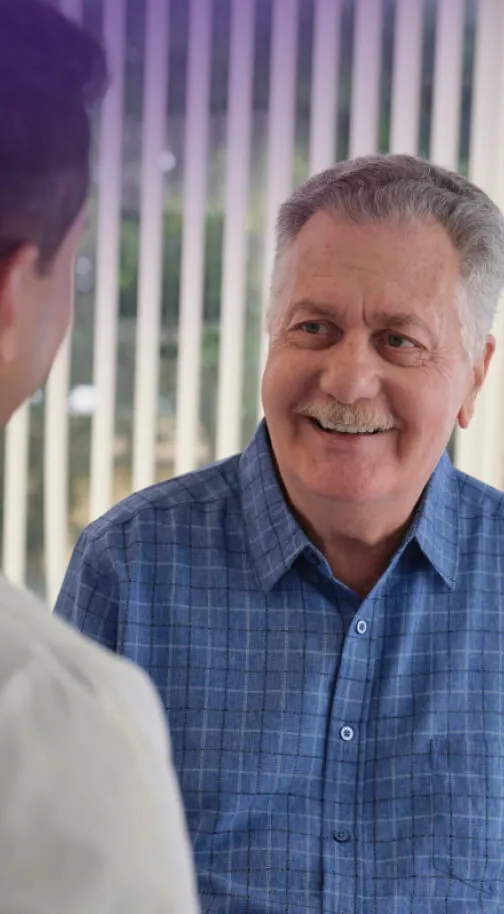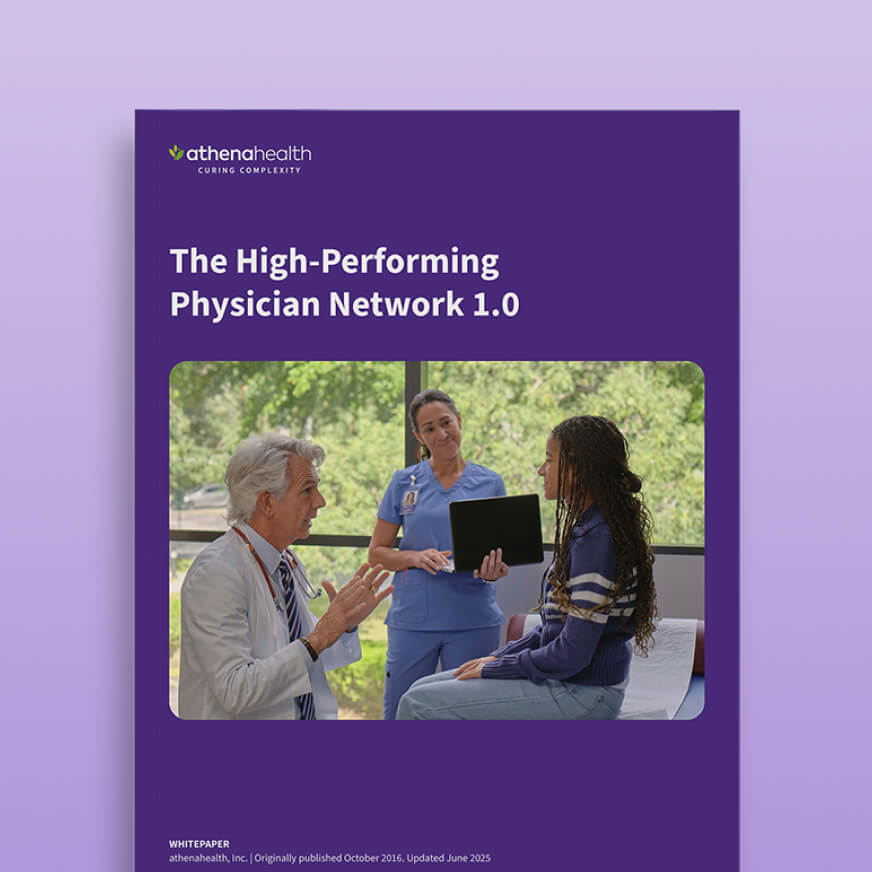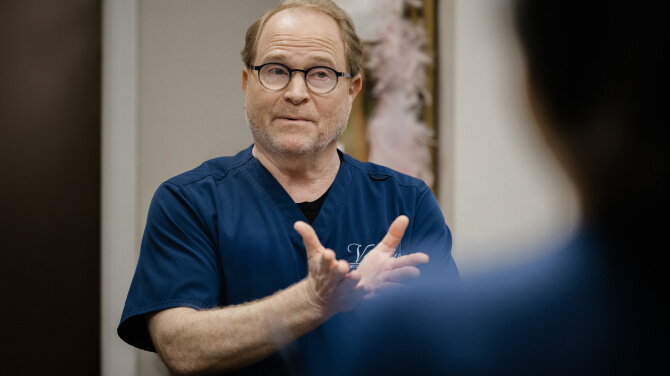It’s widely known that the healthcare industry today is facing a crisis of physician burnout. But, what’s the leading cause according to research? Turns out, excessive clinical documentation requirements are partially to blame.
Cumbersome documentation tools, lack of operational rigor, and excessive or redundant clinical data are all key drivers of this broader challenge, preventing physicians across the U.S. from dedicating proper time to patient care. In our annual Physician Sentiment Survey report, we asked over 1,000 U.S. physicians what would make the biggest difference in their day-to-day to help them reduce clinical documentation burden, streamline clinical workflows, and simplify the practice of care.
The top recommendations to improve healthcare operations from the physicians surveyed include driving efficiency, products and services that help reduce administrative tasks, focusing on interoperability (improving connectivity between information systems), and streamlining daily clinical workflows.1 Likewise, when reflecting on what would most improve the quality of patient care, the top recommendations from physicians were tools that would allow them to find clinical data easily and efficiently, and documentation or scribe support.2
It’s clear that physicians today are consistently struggling with documentation and excessive paperwork. But how can we interpret this research into actionable and lasting change to help relieve this administrative burden in healthcare?
Let’s dive a bit deeper into the research behind these recommendations, and how they can help solve pain points at the organizational level for practices of all sizes.
1) Streamlining clinical workflows for better practice success
Physicians and healthcare organizations need clinical solutions that help take on burdensome administrative tasks for them, working to not only prevent physician burnout, but create efficient workflows that will free up additional time to expand patient care and drive growth. From the PSS, 13% of respondents said that streamlining clinical workflows was a top recommendation to help simplify the practice of care.3
A well-designed and intuitive electronic health record (EHR) that supports a seamless workflow is crucial for clinical efficiency. Using the right tools, like an EHR, can help streamline clinical workflows by serving the right patient data to clinicians at the right time and reducing data entry redundancies, with fewer clicks in between.
Streamlining clinical workflows can also mean getting benefits from accelerators like text macros, order sets, encounter plans, and customizable templates, which help improve documentation efficiency and standardization. These important features of clinical HIT solutions not only help reduce administrative burden but can also create better documentation practices that help practices increase productivity and reimbursement.
2) Improving interoperability in healthcare for quick and easy records and diagnoses
During daily patient encounters, clinicians need complete and accurate patient records in order to make the best possible care decisions. For many, this means examining their own medical records for accurate information, as well as information from external care teams and EHR systems.
But the reality is that many clinicians struggle to get the critical access they need to patient records outside of their own system. Many physicians today say they’re frustrated by the challenges of accessing clinical patient information, and physicians are currently facing an information overload. Only 21% of physicians surveyed agree that it’s easy to send/receive data to/from a different EHR than the one they use, but almost all (94%) agree that getting the right clinical data at the right time4 is crucial. Physicians don't necessarily want more data, but the most relevant information to help them make critical decisions and diagnoses at the point of care. What’s more, specialists are even less likely than their primary care counterparts to feel they have adequate information about a patient’s medical history.5
So, how do we address this challenge to facilitate coordinated healthcare delivery and reduce the burden on clinicians?
Taking a clue directly from physicians, 13% of them stated that improving connectivity between information systems is critical to driving efficiency.6 By choosing EHR technology that enables easier data access and open data exchange through interoperability, care providers can begin to establish efficient care coordination, with relevant clinical information surfaced at the point of care. Implementing secure messaging platforms, shared care plans, and collaborative tools can streamline communication, improve EHR clinical workflows, and enable timely information exchange between physicians and external care teams.
With the help of these tools, physicians can help reduce delays, prevent duplicative efforts, and enhance overall efficiency in managing patient care across different settings and providers—improving electronic health record workflow and making it easier for clinicians to make informed care decisions. Certain EHRs with intuitive interoperability help to synthesize clinical information across sources, surfacing the data clinicians need, when they need it.
3) Integrating products and services that drive efficiency and improve clinical documentation
Physicians today are burdened by excessive clinical documentation tasks and “pajama time”, and many are unable to complete their notes from patient encounters during normal working hours. Most physicians surveyed in the PSS agreed that their daily workload was unsustainable.7 However, only about half (58%) of physicians say that technology is helping them manage their patient workload.8 This means that many of the tools and clinical workflows that clinicians are using daily have been falling short. So, how can care providers bridge this gap?
Of the physicians who currently use an EHR, a majority credit it with helping them provide high-quality care (65%) and improve efficiency (54%).9 The right EHR can continuously create and deploy new features and updates to support EHR usability, and solutions that not only help drive clinical efficiency but also help future-proof physicians and prepare them for what's next.
For example, an EHR that incorporates clinical decision support can provide real-time, evidence-based guidance to clinicians at the point of care. This tool can alert clinicians to potential medication errors, suggest appropriate treatments based on historical patient data, and provide reminders for preventive care measures, helping create a more holistic approach to care. Additionally, a multi specialty EHR that offers mobile access can allow physicians to securely access patient information and perform essential tasks efficiently on-the-go, regardless of their location. Together, these features of healthcare operations systems help lessen the administrative burden that physicians attribute to widespread burnout.
More efficient healthcare operations can lessen the load
Research shows that the key to simplifying the practice of care lies in driving efficiency through the right tools and technology, like an EHR, and getting the right clinical data at the right time. Technology that delivers the right information at the moment of care while simplifying the practice of medicine and removing administrative work – can be the difference between barely surviving as a practice and thriving as a doctor.
Physicians can learn a lot from these findings, helping them to identify pain points within their own practice and alleviate burnout associated with clinical documentation and cumbersome healthcare technology. These three focus areas can help physicians smooth out the challenges that hinder efficient clinical workflows and feel more prepared to provide better patient care.
If your practice is looking to drive better connectivity between healthcare systems, reduce clinical documentation burden, and improve EHR usability, athenahealth can help. Dive into the 2024 Physician Sentiment Survey white paper to discover how insights from this research can help your practice achieve long-term success. For an EHR that can help your practice reduce physician burden and free up valuable time for patient care, learn more about athenaOne.
More athenaInstitute resources
Continue exploring
1-9: 2023 Physician Sentiment Survey, commissioned by athenahealth and fielded by Harris Poll, Jan 2024.












